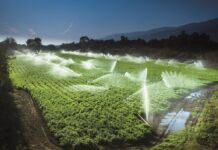Not-for-profit organisation CDP has released a new report in association with Planet Tracker which highlights how water insecurity is already having an adverse effect on companies by stranding assets and the resulting implications for the global financial sector.
The research report, entitled ‘High and Dry: How Water Issues Are Stranding Assets’, identifies the deep implications of these stranded assets for the global financial sector across major sectors of the world economy. This is causing billions of losses among global companies, with around US$15.5 billion either already stranded or at risk, according to the report.
The report presents four case studies from sectors with high levels of water usage, specifically oil & gas, electric utilities, coal, and metals & mining. The case studies include the Keystone oil pipeline in Canada, the Pascua-Lama gold mine on the border of Chile and Argentina, Adani Group’s Carmichael coal mine in Australia, and the Oyster Creek nuclear plant in the US. However, these case studies most likely represent just a small number of projects potentially affected, the report notes.
Although the top 20 financial firms have provided US$2.5 trillion in bond, loan, and equity financing over the past decade, many institutions are still largely unaware of the problem, according to the analysis. One-third of companies are not assessing the impact of water issues on their activities, it notes.
The report recommends three key actions for financial institutions.
One is assessing risks and impacts using new tools to identify risks at different levels, bearing in mind industrial, company, stock, and geographical factors.
Another is disclosure of data in order to increase the level of transparency, which is critical to understanding water risks, ahead of likely rulings by regulators, who are already creating mandatory disclosure requirements relating to environmental crises.
The third recommended key action is management of risks and impacts through the creation of an engagement strategy to communicate the need for companies to address the water crisis.








